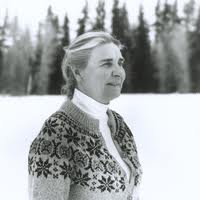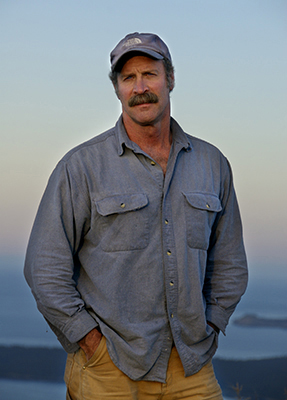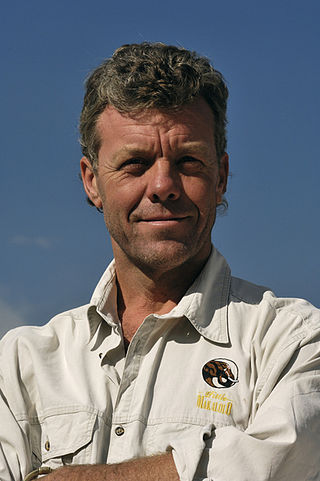Related Research Articles

The Arctic National Wildlife Refuge or Arctic Refuge is a national wildlife refuge in northeastern Alaska, United States, on traditional Iñupiaq and Gwich'in lands. The refuge is 19,286,722 acres (78,050.59 km2) of the Alaska North Slope region, with a northern coastline and vast inland forest, taiga, and tundra regions. ANWR is the largest national wildlife refuge in the country, slightly larger than the Yukon Delta National Wildlife Refuge. The refuge is administered from offices in Fairbanks. ANWR is home to a diverse range of endemic mammal species; notably, it is one of the few North American locations with all three endemic American ursids—the polar bear, grizzly bear, and American black bear, each of which resides predominantly in its own ecological niche. Besides the bears, other mammal species include the moose, caribou, wolves, red and Arctic fox, Canada lynx, wolverine, pine marten, American beaver, and North American river otter. Further inland, mountain goats may be seen near the slope. Hundreds of species of migratory birds visit the refuge yearly, and it is a vital, protected breeding location for them. Snow geese, eiders and snowy owls may be observed as well.

The Tongass National Forest in Southeast Alaska is the largest U.S. National Forest at 16.7 million acres. Most of its area is temperate rain forest and is remote enough to be home to many species of endangered and rare flora and fauna. The Tongass, which is managed by the United States Forest Service, encompasses islands of the Alexander Archipelago, fjords and glaciers, and peaks of the Coast Mountains. An international border with Canada runs along the crest of the Boundary Ranges of the Coast Mountains. The forest is administered from Forest Service offices in Ketchikan. There are local ranger district offices located in Craig, Hoonah, Juneau, Ketchikan, Petersburg, Sitka, Thorne Bay, Wrangell, and Yakutat.

Margaret Elizabeth Thomas "Mardy" Murie was a naturalist, writer, adventurer, and conservationist. Dubbed the "Grandmother of the Conservation Movement" by both the Sierra Club and the Wilderness Society, she helped in the passage of the Wilderness Act, and was instrumental in creating the Arctic National Wildlife Refuge. She was the recipient of the Audubon Medal, the John Muir Award, and the Presidential Medal of Freedom—the highest civilian honor awarded by the United States.
The WILD Foundation is a 501(c)(3) organization that was founded in 1974 by two South Africans and based in Boulder, Colorado.

The Yukon–Kuskokwim Delta is a river delta located where the Yukon and Kuskokwim rivers empty into the Bering Sea on the west coast of the U.S. state of Alaska. At approximately 129,500 square kilometers (50,000 sq mi) in size, it is one of the largest deltas in the world. It is larger than the Mississippi River Delta ; it is comparable in size to the entire U.S. state of Louisiana. The delta, which consists mainly of tundra, is protected as part of the Yukon Delta National Wildlife Refuge.
Jim Brandenburg is an environmentalist and nature photographer and filmmaker based near Ely, Minnesota. His career includes over 10 years as a newspaper photojournalist, over 30 years as a contract photographer for the National Geographic Society, and commissions from such groups as the United States Postal Service, NHK and the BBC.

The Wilderness Society is an American non-profit land conservation organization that is dedicated to protecting natural areas and federal public lands in the United States. They advocate for the designation of federal wilderness areas and other protective designations, such as for national monuments. They support balanced uses of public lands, and advocate for federal politicians to enact various land conservation and balanced land use proposals. The Wilderness Society also engages in a number of ancillary activities, including education and outreach, and hosts one of the most valuable collections of Ansel Adams photographs at their headquarters in Washington, D.C.

Celia Hunter was an American conservationist and advocate for wilderness protection in her home state of Alaska. She was conferred the highest award by the Sierra Club, The John Muir Award, in 1991. She was presented the highest award by the Wilderness Society, The Robert Marshall Award, in 1998.

Cristina Goettsch Mittermeier is a Mexican photographer, conservationist, biologist, and author.
Sarah Agnes James is a Neets'aii Gwich'in activist from Arctic Village, Alaska, USA, but was born in Fort Yukon "because that is where the hospital was. I grew up part of the time in Fort Yukon and Salmon River, but most of the time in Arctic Village, Alaska."James is a board member of the International Indian Treaty Council. She was awarded the Goldman Environmental Prize in 2002, together with Jonathon Solomon and Norma Kassi. They received the prize for their efforts to protect the Arctic National Wildlife Refuge (ANWR) from plans of oil exploration and drilling. Oil and gas exploration would disturb the life cycle of the Porcupine caribou, which has been a foundation for the Gwich'in culture since approximately 18,000 BC.

The Izembek National Wildlife Refuge is the smallest of the National Wildlife Refuges located in the U.S. state of Alaska. It lies on the northwest coastal side of central Aleutians East Borough. Almost all of the refuge was designated as wilderness in 1980 under the Alaska National Interest Lands Conservation Act (Anilca). The refuge is administered from offices in Cold Bay.
Robert Glenn Ketchum is a pioneering conservation photographer, recognized by Audubon magazine as one of 100 people "who shaped the environmental movement in the 20th century.".

Subhankar Banerjee is a photographic artist, educator and activist whose images of the Arctic National Wildlife Refuge and other Alaskan wild lands have captured international attention.

Conservation photography is the active use of the photographic process and its products, within the parameters of photojournalism, to advocate for conservation outcomes.
Virginia Hill Wood was an American environmental activist and a pioneer in the Alaskan conservation movement. Ginny Wood co-founded the Alaska Conservation Society in 1960 with her then husband, Morton "Woody" Wood.

Carr Clifton is a local American landscape, nature and wilderness photographer. A native Californian living in the northern Sierra Nevada near Taylorsville, California, Carr began photographing and color printing professionally in 1979 after seeking advice and inspiration from his mentor and neighbor, pioneering 20th century master landscape and conservation photographer Philip Hyde. Credits include a US Postal Service stamp of Acadia National Park and numerous exhibit format books. Clifton has spent thirty-five years exploring and documenting endangered, wild landscapes, creating an immense body of work with a large format 4x5 film camera, and more recently a digital camera.

Pete Oxford is a British-born conservation photographer based in Cape Town, South Africa, after living in Quito, Ecuador for several years. Originally trained as a marine biologist, he and his wife, South African-born Reneé Bish, now work as a professional photographic team focusing primarily on wildlife and indigenous cultures.
Boyd Norton is an American photographer, known for his work in wilderness photography and his environmental activism. He is the photographer/author of 17 books covering topics such as from African elephants, mountain gorillas, Siberia's Lake Baikal and issues of Alaskan and Rocky Mountain conservation. He contributed photographs to the Environmental Protection Agency's Documerica project in the early 1970s.
Thomas D. Mangelsen is an American nature and wildlife photographer and conservationist. He is most famous for his photography of wildlife in the Greater Yellowstone Ecosystem, as he has lived inside the zone in Jackson, Wyoming, for over 40 years. In 2015, he and nature author Todd Wilkinson created a book, The Grizzlies of Pilgrim Creek, featuring a grizzly bear known as Grizzly 399, named so due to her research number. He has been active in the movement to keep the Yellowstone area grizzly bears on the Endangered Species List. Mangelsen is also known for trekking to all seven continents to photograph a diverse assortment of nature and wildlife. A photograph he took in 1988 titled, "Catch of the Day" has been labeled "the most famous wildlife photograph in the world". In May 2018, he was profiled on CBS 60 Minutes. He has received dozens of accolades throughout the decades.
References
- ↑ "Amy Gulick » iLCP". International League of Conservation Photographers. Retrieved 19 October 2014.
- ↑ "iLCP » Bringing Conservation Into Focus". International League of Conservation Photographers. Retrieved 19 October 2014.
- ↑ Guilck, Amy. "Wilderness or Wasteland? A Trip to the Arctic National Wildlife Refuge". Archived from the original on 17 April 2010. Retrieved 7 April 2010.
- ↑ Jackinsky, McKibben (June 18, 2008). "Sigman wins award for environmental education". Homer News. Archived from the original on 12 July 2011. Retrieved 6 December 2010.
- ↑ Swan, James A. (May 20, 2010). "Salmon In The Trees". ESPN. Retrieved 6 December 2010.
- ↑ Braasch, Gary. "Salmon in the Trees: Reviews" . Retrieved 2010-04-08.